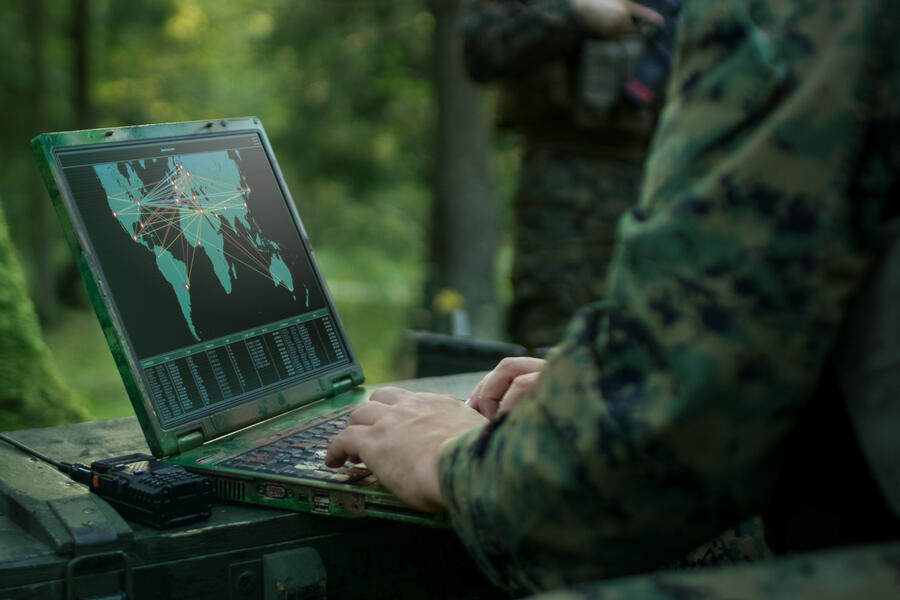Digital Power is Reshaping the Future of Defence
Three Points to Remember
- Digital transformation at 'wartime pace' is central to delivering 10X lethality, the new benchmark for military effectiveness.
- Cloud-based infrastructure, continuous network recalibration, secure-by-design hardware and software, and AI intelligence all play a role in establishing a digital advantage.
- Operating at this tempo calls for agile contracts, a focus on outcomes, and a culture of continuous improvement.
The UK’s defence priorities are shifting. In an era defined by fast-moving and unpredictable threats, the strategic imperative is clear: outpace the adversary or risk falling behind. Delivering ten times more lethality - not through greater firepower alone, but through faster, more precise effects - has become the new benchmark for military effectiveness. The 2025 Strategic Defence Review (SDR) captures this urgency, calling for a force that is more lethal, agile and integrated. Central to this vision is a new kind of advantage, one not built on additional platforms or conventional might, but on digital speed, precision and integration.
Digital advantage at the core
Digital is now the most critical enabler of operational success. It connects the dots between intelligence and action, transforming raw data into informed decisions and turning those decisions into targeted strikes. The cornerstone of this effort is the UK Digital Targeting Web. It brings together sensors, deciders and ‘effectors web’ into a unified ecosystem that can deliver precise effects imminently. This is not simply automation - it is a real-time, responsive network where information flows at the speed of need to respond as fast as the threat evolves. Satellites, drones, radar systems and troops in the field all play a role, feeding data into a secure, cloud-based infrastructure. Artificial intelligence enables real-time analysis and prioritisation - whether manned or autonomous – to act on high-confidence targets with minimal delay.
This digital kill chain gives commanders not just visibility, but options. In Leidos we have been investing in research and development for the last few years bringing together open interoperable technologies that allow this rapid integration, fusing of data and AI analysis to support decision making; an example of this being our Multi Domain Demonstrator.
From legacy systems to agile capability
Defence is shifting toward a modular, software-defined model. Capabilities are treated like products, constantly evolving based on user feedback and operational need. Field something quickly, test it in theatre, learn from it, and improve it. That cycle is the new standard, especially with the SDR calling for a ‘wartime pace’ of technical evolution.
To operate at this tempo, procurement needs to change too. Agile contracts that support organisations to change their contracting models, reduce risk and get more benefits out of adopting Agile development, will allow for rapid development, incremental delivery and re-prioritisation as needs shift. Industry and military teams are beginning to work side by side, co-creating capabilities closer to the front line. Success is measured not in specifications delivered but in outcomes achieved - how fast something is integrated, how reliably it performs, and how it contributes to mission success.
In this new model, networks take on a more active role using embedded AI, maintaining connectivity even in contested environments. Operational networks learn from their environments, continuously recalibrating to keep forces connected and ready.
Cyber defence and dominance
Cyber capabilities are also taking on new prominence. They are no longer confined to defence or deterrence. Offensive cyber operations can disable enemy command and control (C2) capabilities, corrupt targeting data or degrade logistics. Conversely, cyber resilience is now synonymous with mission resilience. Achieving it requires:
- Secure-by-Design hardware and software (rooted in zero-trust architectures)
- Active self-defence, where systems detect intrusions, quarantine affected modules and recover autonomously.
- Deception and moving target defence, presenting false network topologies to adversaries.
Treating cyber solely as a risk factor will leave digital kill chains brittle; instead, it must be integrated as an intrinsic combat capability.
Today, cyber is a frontline tool. It can disrupt enemy command systems, degrade logistics or distort intelligence. At the same time, systems must be resilient enough to recover quickly from attacks. Cyber resilience is now mission resilience.
The path to 10X lethality does not begin with more platforms, it begins with digital. By investing in integration and digital transformation, enabling faster decision-making and building a culture of continuous improvement, the UK is creating a force that strikes faster, smarter and with greater precision. In the modern warfare, lethality is measured in milliseconds. Digital is no longer an enabler - it is the edge.
EXTENDED TALK AT DSEI
For more on this important topic, join me for the talk entitled 'Digital: the force multiplier delivering 10X lethality' at DSEI in the Naval Pavilion on 10th September, from 12:30pm to 12:55pm.

